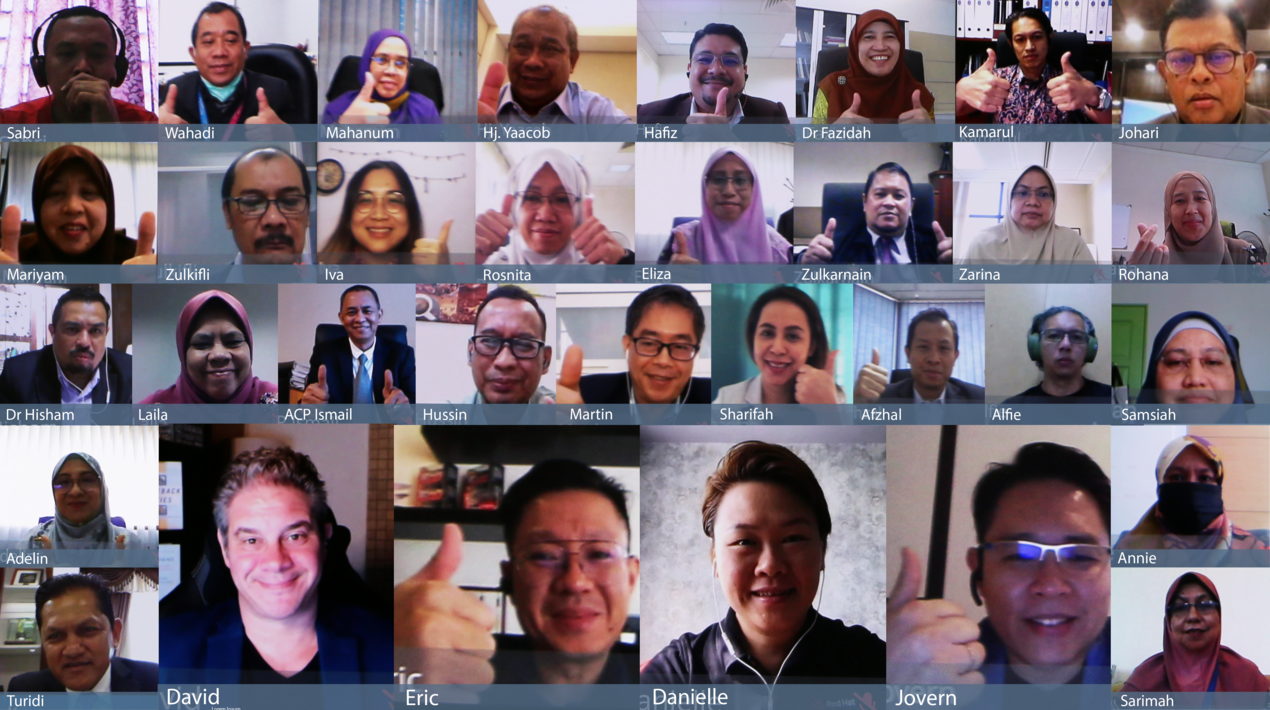
The digital economy grew rapidly in 2020, as the pandemic drove businesses to ramp up their online offerings. Similarly, the “new normal is forcing the public sector to speed up digital transformation initiatives to ensure that citizens continue to have mission-critical services uninterruptedly and seamlessly.
Governments and agencies around the world are implementing a slew of digital transformation strategies to enhance citizen satisfaction and experience as well as to cut costs. These initiatives have been accelerated by the pandemic and, in some cases, it has helped clean up systems. While the pandemic has revealed flaws, it has also created opportunities to strategise and strengthen economic, societal and infrastructure resilience, effectiveness, and responsiveness.
The public sector is currently focusing on improving service delivery by deploying digital technologies to broaden its scope and quality. This includes improving e-government portals to become more efficient through monitoring and progress analysis.
The adoption of cloud technologies has seen a significant uptake, as it plays a critical role in enabling the rapid transition to remote working and scaling up services to meet surging demand.
Like other countries, Malaysia is also still facing significant challenges as a result of the crisis. It has impacted Malaysians of all ethnicities and social classes, as well as both the public and private sectors. Entire industries have been disrupted and many day-to-day interactions are now virtual.
The Malaysia Digital Economy Blueprint has been developed to set the direction, outline the strategies, initiatives and targets to drive the growth of the digital economy, including bridging the digital divide. By capitalising on existing opportunities, the Blueprint will ensure that the country is ready to embrace digital technology and realise the aspirations of MyDIGITAL.
It has compelled the public sector to optimise IT architecture and processes, as well as hastened the adoption of cloud technologies, managing technological risks and scaling up government services to the uptick in demand.
The government now collects performance data regularly that can provide insights to be used for future planning and decision-making. This will result in a forward-thinking public sector that uses relevant citizen data to move toward more proactive and, possibly, predictive service delivery.
It is evident that a successful Digital Transformation programme will improve transparency, accuracy, and accountability, ensuring Malaysian citizens benefit from an improved democratic process.
This was the focal point of the OpenGovLive! Virtual Breakfast Insight on 23rd September 2021 – a closed-door, invitation-only, interactive session with Malaysia’s top government agencies. The session is focused on imparting the current advancements and measurements in the Public Sector’s digital transformation journey towards efficiency.
Citizen-centric solutions for future-ready government

Mohit Sagar, Group Managing Director and Editor-in-Chief, OpenGov Asia, kicked off the session with his opening address.
During the pandemic, he acknowledges, the demand for online services skyrocketed. As a result, many businesses offered a plethora of personalised options which has made customers more discerning and demanding. According to Mohit, the rate of this acceleration is driven and underpinned by technological advancements. Certain platforms empower organisations significantly – which is ultimately what organisations and governments seek.
In addition to digital offerings, there has been a paradigm shift in the way people think about and adopt any technology. Moreover, there has been a radical change in the culture after the pandemic. The approach to new platforms, new solutions and new applications are far different from the pre-pandemic era. People, organisations and governments see the need for and are willing to take the risk to adopt new ways of doing things online, digitally and remotely.
The main challenge for governments as they endeavour to meet the changed demands of citizens is juggling many things at once – infrastructure, processes, security and upskilling. With the amazing job that retail and banking have done compounded with the ubiquity of smart devices and the transition to becoming digital-natives, citizens are far more tech-savvy. Every household in every country now uses technology in their daily lives and data plays a critical role in this digital landscape.
Citizen requirements are evolving – they demand more, faster and easier services – and are growing by the day. To manage these expectations and meet the demands, governments need to become more tech-dependent and agile; but there is much opposition to change.
This resistance can be overcome if organisations collaborate intentionally and proactively. Planning a digital strategy involves engaging and collaborating with multiple stakeholders. This requires not only time and technology but expertise.
Mohit believes that finding the right partner is critical to success. Working with experts frees agencies to concentrate on their core mandates and deliverables.
The new normal needs a new way of thinking

Eric Quah, Country Manager, Red Hat Malaysia, in his opening address emphasised how digital transformation, driven by COVID-19, has irreversibly changed people’s lives and daily activities.
He emphasised the importance of being a citizen and the responsibilities that go with being one. People need to have clear and realistic expectations of transformational change from the government. There must be an accurate and reasonable understanding of what a government can and should do in the light of what is essential and required to thrive in the current scenario.
Eric thanked Mohit for hosting the event and expressed the hope that it would provide knowledgeable and informative insights on advancing the digital transformation milestones.
My Digital Government for the Future – The Open-Source Way

Danielle Lee, Transformation Specialist, APAC Transformation Office, Red Hat acknowledged how everything had changed overnight when COVID-19 hit the world in late 2019. In the months that followed, practices, platforms and processes that were put in place – for the most part reactively and ad-hoc – have become the SOP for the “new norm”.
The pandemic, in her opinion, has put tremendous pressure on organisations to shift to digital and this new norm is required to operate with speed, scalability and stability. A few services have emerged as the new digital norm stand out in terms of transformation.
For instance, the Open API system has changed the way institutions think about technology and security. Organisations to interact digitally through the integrated and seamless Customer Experience methods. These have now become essential and are no longer merely ‘good to have’ – they are a top objective and expectation needed to provide a frictionless experience for end-users.
Currently, everything is online or via mobile and there is renewed pressure to transform how Malaysians interacts with the government.
Danielle agreed with Eric’s statement that agencies and organisations can play a role in leveraging data that they already have on citizens to interact, engage and communicate with greater speed and improved experiences using analytics.
From her experience and lessons learnt while creating a digital bank and other digital initiatives, she shared a few Key Differentiating Technology Capabilities that are necessary for digital leaders.
At the top are platform scalability, where modern, cloud-native systems can be scaled to meet growing customer demand, partner integration requirements and data processing needs while maintaining a cost advantage.
There are substantial difficulties when integrating legacy systems, especially where the legacy integration layers were not ready to be scaled and could not use cloud because bare-metal servers were used at the time. Those challenges, however, had taught the agency to be future-ready when implementing a cloud strategy.
In these scenarios, the importance of a scalable cloud-native container platform, such as Red Hat OpenShift Container Platform, running on top of hybrid cloud infrastructure is easily seen. The Red Hat OpenShift Container Platform is a dependable hybrid cloud foundation for developing and scaling containerised applications. The platform provides a single pane of glass for managing workloads across servers in an agnostically.
“Having a right common platform right across multiple platforms, Danielle says,” I think that is kind of important foundation for us as an organisation to build our digital service.”
The advanced data analytics engine includes AI and ML capabilities to improve a personalised customer experience and also efficiency gains through processing services automation is the next pillar on the Key Differentiating Technology Capabilities.
Agile integration plays a role in these three capabilities. “The truth is that data integration, as Mohit mentioned earlier, is coming from all over the place,” Danielle said. This is where an open architecture platform that enables hybrid integration across application services both internally and externally can support rapid external growth such as through partnerships.
In closing, Danielle said that although technology is important, culture also needs to be reflected equally.
Enjoy transformation with continuous innovation and collaboration

David Graham, Chief Innovation Officer for the City of Carlsbad, the next speaker, has been working with the government and private sector for the past 20 years.
There is a lot to be said for the question posed by previous speakers, “How do you know when to bring technology and lessons learnt during the pandemic to truly make things better for the people or citizens we serve?”
To deal with that, David first shared a little about the country he works with. There are 18 cities in a county in the San Diego region, and Carlsbad has a population of about 1.4 million people; however, small and large cities alike are focused on how they can use data and technology to improve the lives of their residents.
San Diego is well known for its work on IoT and for its innovative companies that are part of the city’s innovation ecosystem – which has led to the county’s transformation journey. For example, the region has the world’s first all-electric car fleet and the largest deployment of smart streetlights and is consistently addressing climate change from all fronts. Adoption of technology in the county is high and the appetite for more keeps growing.
Carlsbad explored the development of digital tools for citizens and the insights were provided by the citizens or residents themselves – assisting the government to drive change using those insights.
David elaborated on a strategy they call “Connected Carlsbad” that is built on 5 pillars:
- Pursue community-wide digital transformation
- Build capacity for Data-driven Decision making
- Foster a vibrant civic engagement culture
- Enhance accessibility and transparency
- Promote safety and sustainability through connectivity
Ultimately, Carlsbad is still looking for its “moon-shot.” Some of the greatest things that have happened in the world today have occurred as a result of problems and challenges, but they have been done collectively, and that is the type of moon-shot that Carlsbad is looking for.
“One might wonder what there is to learn if we are already there?” David ponders. “Now that innovation has advanced, what do organisations do on their transformation journey?
He answerers that with a quote from Mark Zuckerberg – move fast and break things – and then exhorts the delegates, “Now you do good, and you can also break things.”
One way to assess how an organisation or country is doing is a digital maturity model that has levels of where organisations is that ranges from digital novice to best in class. Several factors contribute to the success of a digital transformation strategy and creativity. Skills, resources, infrastructure; even culture can be either an accelerant or a detriment to innovation.
Organisations, he believes, should put all of their learning in the context of what they are trying to achieve, taking an inclusive approach to development or innovation that is being implemented. It should not only be collaborative but have a greater level of inclusivity, equity, understanding and empathy.
David stresses that the common thread when governments and organisations have been successful is when they have put people first. “All of this collaboration and connection, followed by shared understanding and information, are really some of the best ways for us to be able to drive change in our organisation and communities throughout our country.
David concluded by stating that there is no end to this digital transformation journey and that it is always a continuous effort that must be adopted each day. “It’s best”, he says, “to continue and enjoy this transformation journey.”
Interactive Discussion
After the informative presentations, delegates participated in interactive discussions facilitated by polling questions. This activity is designed to provide live-audience interaction, promote engagement, hear real-life experiences, and impart professional learning and development for participants.
The first question asked is what external help organisations think is needed most to accelerate their digital transformation journey. An overwhelming majority (80%) of the participants answered mindset change and new ways of working. The remaining fifth were equally divided between building the framework and a standard platform (10%) and agile integration (10%).
The next poll was on their biggest challenge in digitalisation. More than half (53%) went with common framework and platform. About a quarter (26%) said people and skillsets were a challenge while 11% opted for scalability. The remaining delegates were evenly split between answered long release cycles (5%) and stated change could result in incidences and outages (5%).
When asked what their success factors for digitalisation were, 38% indicated customer experience and another 38% opted for speed to deliver. Stability was chosen by 12%, 6% said scalability and the balance 6% has others.
Delegates were questioned about their organisation’s cloud strategy. More than (56%) answered hybrid cloud, 28% said private cloud, 11% went with all on-premises and 5% chose multi-cloud.
When queried on what the top challenges in leveraging data are between the organisations, half said they were unable to do so because of security constraints. Just under a third (31%) considered data integration the biggest challenge while 19% had other issues.
In sharing what the key value and driver of a government cloud is, 59% agreed it was security while 29% opted for standardisation and governance. The remainder were balanced between the total cost of ownership/price (6%) and integration (6%).
On what their plans were to develop new applications and to modernise their legacy applications, 44% said they would outsource, 33% would opt for SaaS, 17% would re-write while 6% confirmed they would retire.
The final question asked how they would characterise the current stage of digital transformation in their organisation. 42% said they were planning but no work implementation or execution had been done yet. A third (32%) indicated that an MVP / pilot project had been rolled out and a quarter (26%) said a full-scale implementation of more than one programme or project had been undertaken.
Conclusion
As more organisations and agencies accelerate their digital transformation efforts, challenges and difficulties are unavoidable. Continuing resource constraints necessitates increased legislative priority, budget constraints and the preservation of an existing system. To address these and other issues, it is clear that the future of government will be digital.
Citizens’ expectations are important in all of this, and governments all over the world are working hard to meet them. Innovative technology must be used to empower and improve government agencies’ business practices while also lowering costs and making the citizen experience as smooth and efficient as possible.
In closing, Eric Quah, Country Manager of Red Hat Malaysia and Jovern Lim, Enterprise AE of Intel Corporation thanked the delegates for attending the event session. Eric praised the participants for providing useful information, “It is all about sharing one another’s thoughts to learn from the challenges and improve.”
He agreed that digital transformation was here to stay and that changes will inevitably occur. It is a radical shift that organisations should make a habit of. Red Hat is not only known for its open-source operating systems, but the company is always ready to help customers modernise their existing systems and build new infrastructure while adhering to budgets, following regulations and ensuring citizens have the best possible experience.
 Jovern Lim, an Intel executive, was impressed by the delegates’ enthusiasm. The discussion was enlightening and would go a long way to informing their own strategies and thought processes when dealing with organisations down the road.
Jovern Lim, an Intel executive, was impressed by the delegates’ enthusiasm. The discussion was enlightening and would go a long way to informing their own strategies and thought processes when dealing with organisations down the road.
He noted that compute power is necessary for areas like multi-function IoT devices as mentioned by David. Today’s businesses are increasingly reliant on computing power and the development of better technology-enabled devices. Every connection and computer requirement is mission-critical with the integration of intelligence into every device we encounter.
David Graham noted that ultimately, it all comes down to putting people first. He was delighted to have conveners such as the OpenGov Asia team, Red Hat and Intel, as it demonstrates that there will always be people who are passionate about transforming the world.
Mohit concluded the session by thanking thanked everyone and expressing his hope that this session was beneficial. He advised organisations to continue pushing for digital acceleration and to not stop transforming.
















